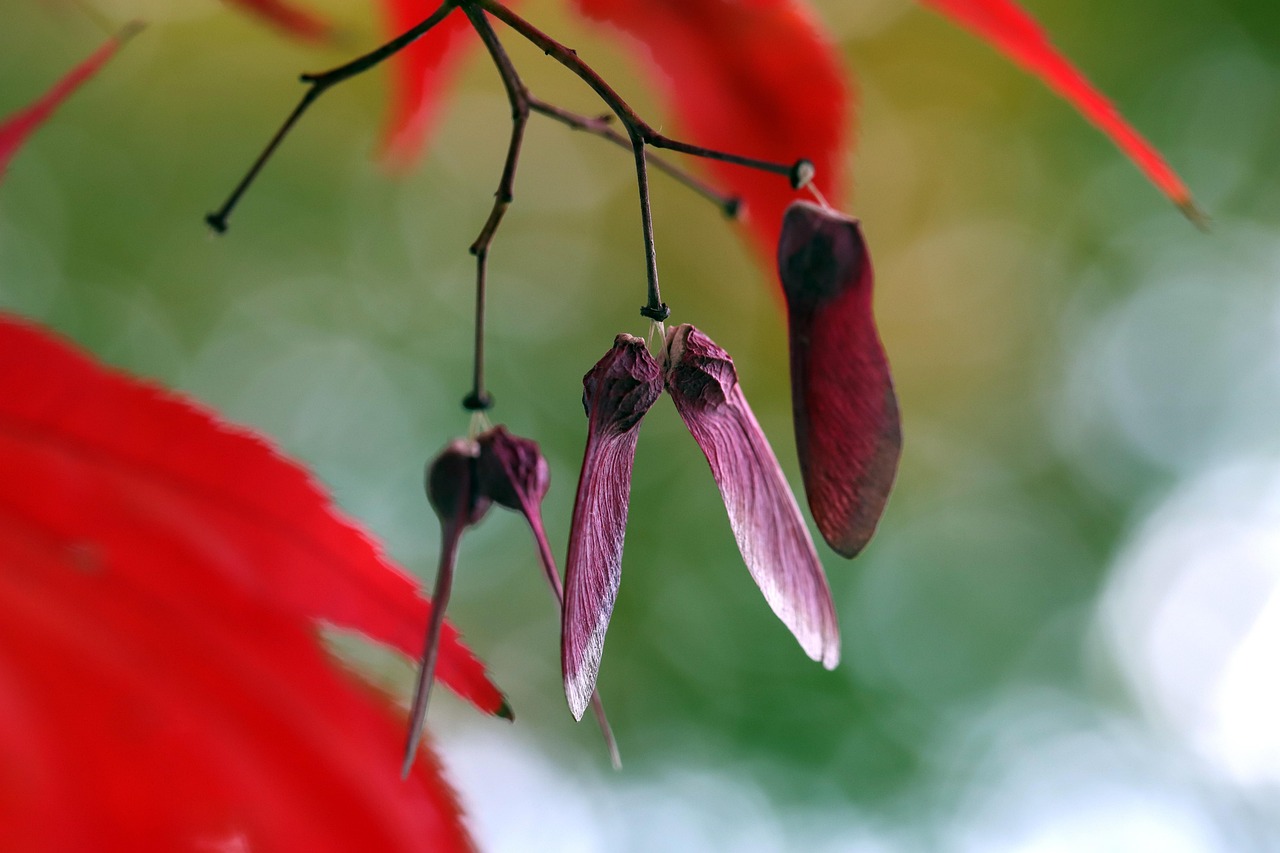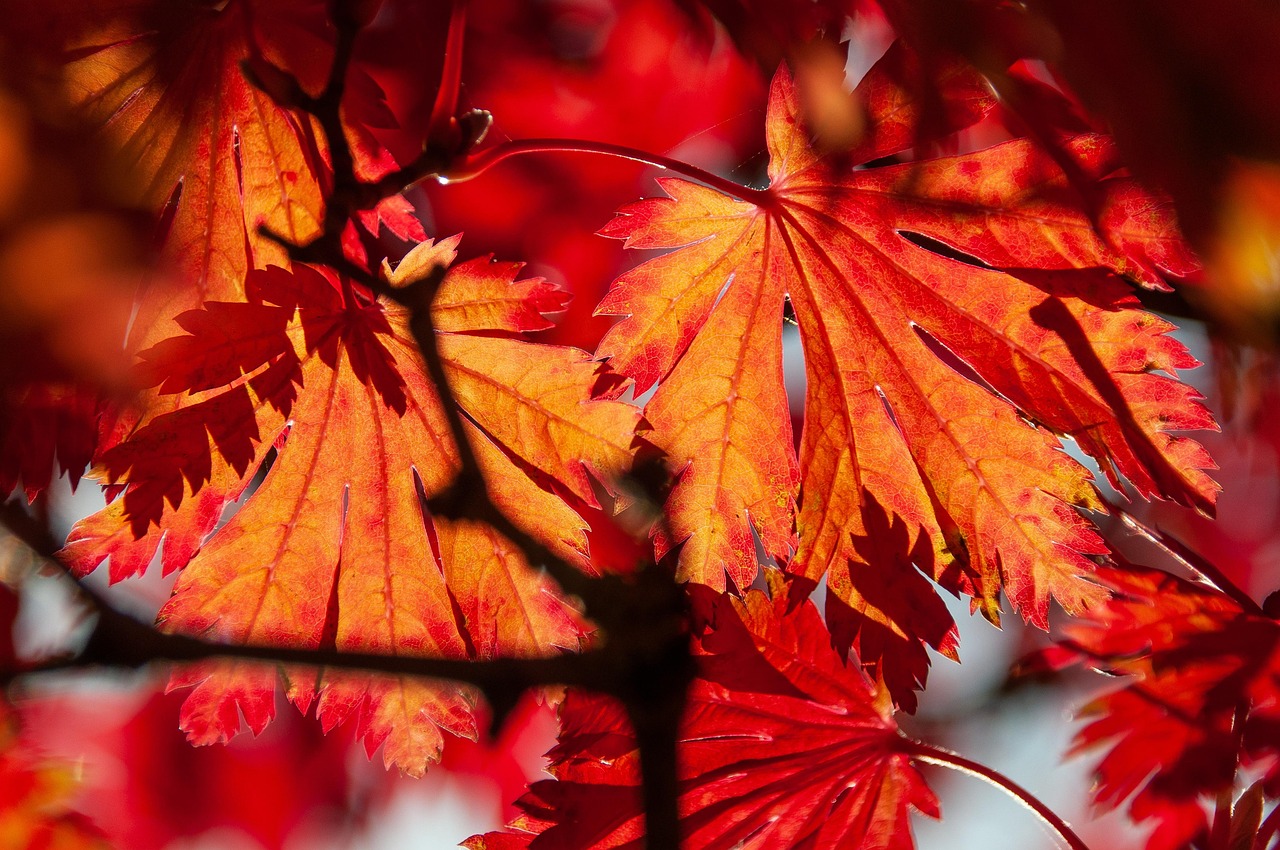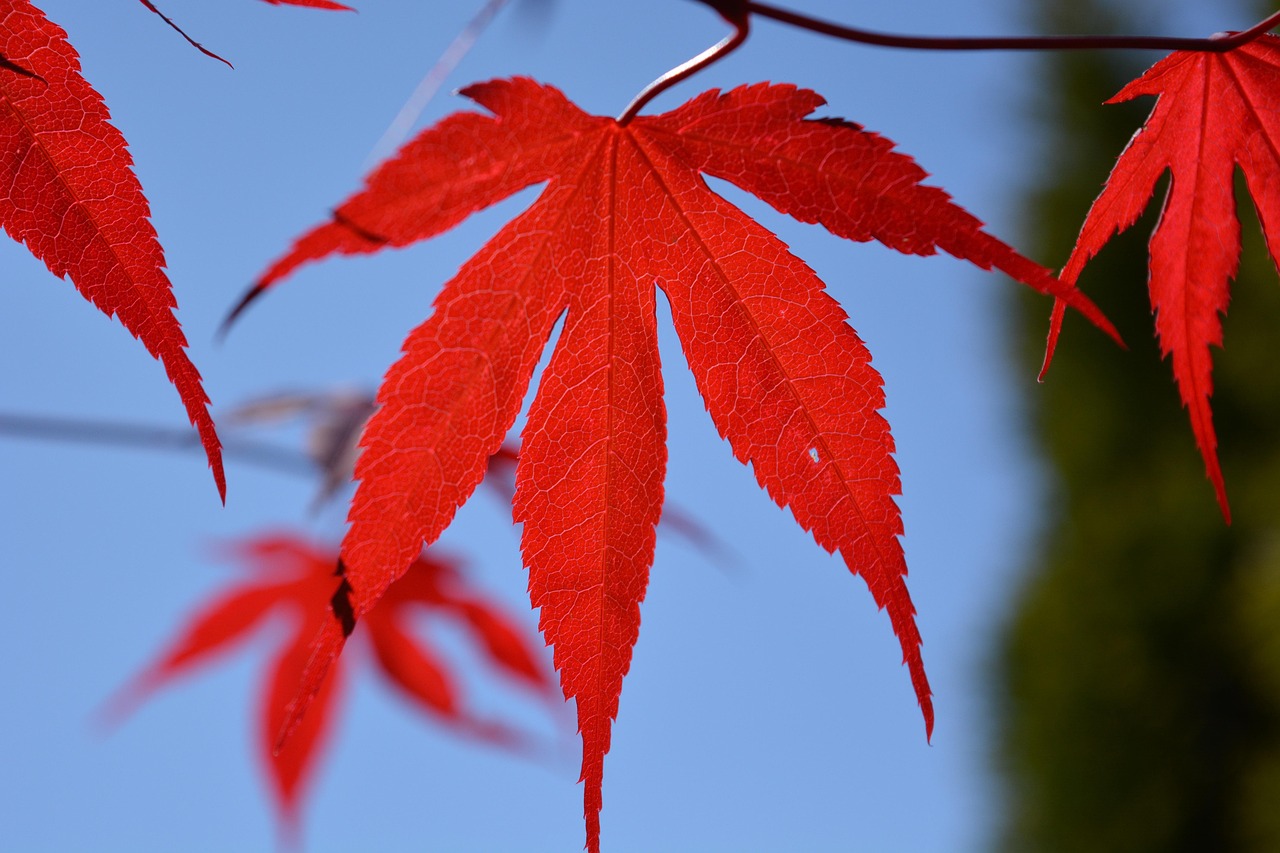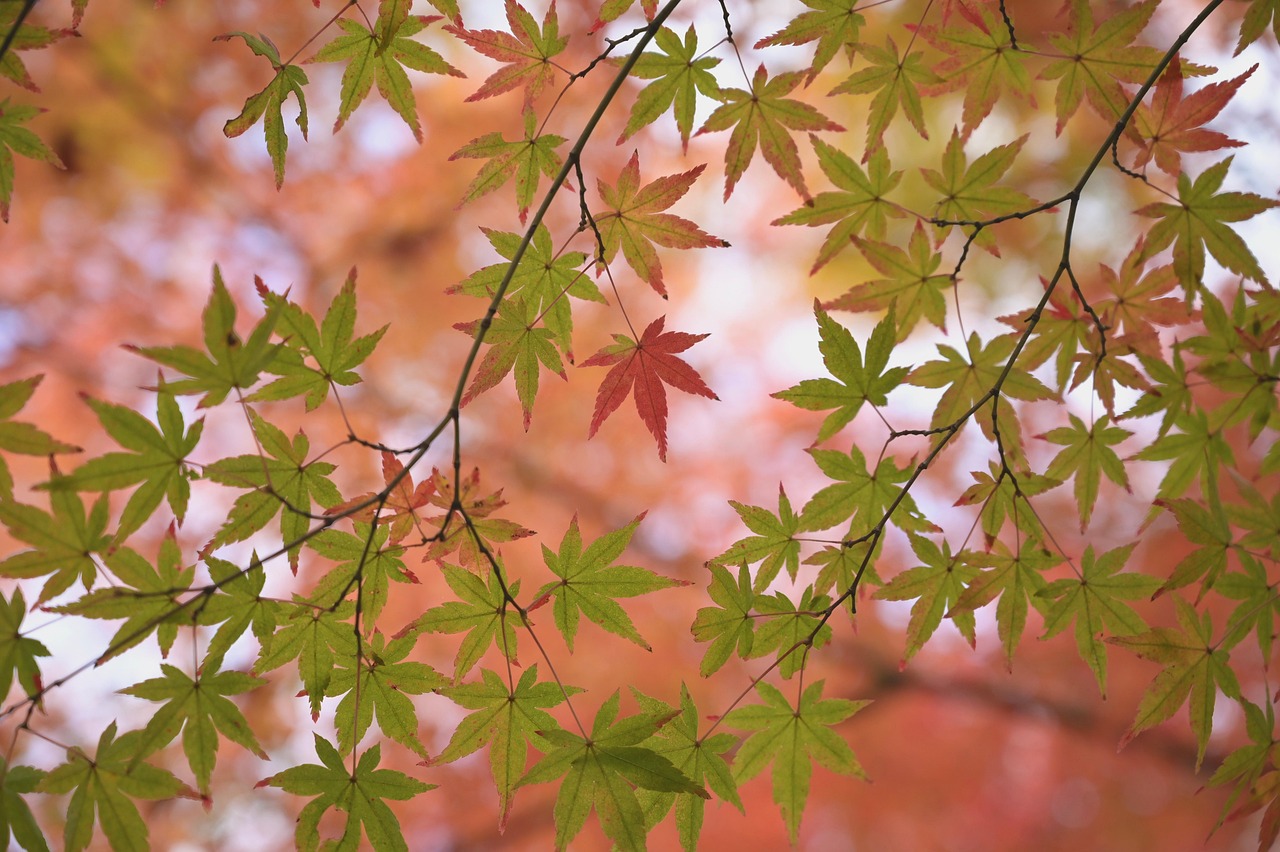Pruning red maple trees is essential for maintaining vibrant canopies. To achieve this, focus on removing dead or diseased branches, thinning crowded areas, and shaping the tree to promote healthy growth. The best time to prune is late winter or early spring before new growth begins.
The red maple tree (Acer rubrum) is a popular choice for landscaping due to its stunning fall color and adaptability to various soil types. These trees are known for their rapid growth and are commonly found in both urban and rural settings. However, to keep them healthy and vibrant, regular pruning is vital. Proper pruning not only enhances the tree’s appearance but also improves air circulation and sunlight penetration, which can lead to a more robust canopy.

Understanding the anatomy of a red maple can aid in effective pruning. The tree consists of branches, twigs, leaves, and buds, all of which play a role in its health. Pruning can be intimidating for many; however, it is a necessary practice. With the right techniques and timing, anyone can learn how to care for their red maple effectively.
Benefits of Pruning Red Maple Trees
Pruning red maple trees offers several benefits that contribute to their overall health and aesthetic appeal. Here are some key advantages:
- Encourages Healthy Growth: Regular pruning stimulates new growth and helps the tree maintain its shape.
- Improves Airflow: Thinning out crowded branches allows better airflow, reducing the risk of diseases.
- Enhances Aesthetics: A well-pruned tree looks more attractive and can enhance your landscape design.
- Increases Sunlight Exposure: Proper pruning ensures that sunlight reaches more leaves, promoting photosynthesis.
- Removes Hazards: Removing dead or weak branches decreases the risk of falling limbs during storms.
Knowing when to prune is just as important as knowing how to prune. Pruning at the right time can lead to optimal results. The ideal time for pruning red maple trees is during their dormant season, typically late winter or early spring. This timing allows the tree to heal quickly before the growing season begins.

Essential Tools for Pruning
Having the right tools is crucial for effective pruning. Here are some essential tools you should consider:
- Hand Pruners: Ideal for small branches and precise cuts.
- Loppers: Best for cutting medium-sized branches that are too thick for hand pruners.
- Saw: Useful for larger branches that require more force to cut through.
- Gloves: Protect your hands from sharp tools and debris.
- Ladder: Necessary for reaching higher branches safely.
Pruning Techniques
When it comes to actual pruning techniques, there are several methods that can be employed to ensure a healthy canopy. Here are some effective techniques:
- Thinning Cuts: These cuts remove entire branches back to a lateral branch or stem. This method reduces density and encourages better light penetration.
- Heading Cuts: This technique shortens a branch by cutting it back to a bud. It encourages new growth but should be used sparingly to avoid excessive bushiness.
- Cleaning Cuts: Remove dead, damaged, or diseased wood. This is essential for preventing disease spread and maintaining tree health.
- Shaping: Regularly step back to assess the shape of the tree as you prune. Aim for a balanced look while considering the natural growth habit of the tree.
Before starting, make sure to inspect your tree thoroughly. Identify any dead or diseased branches that should be removed first. This will not only improve the appearance but will also enhance the overall health of your red maple.

Common Mistakes to Avoid
Even experienced gardeners can make mistakes when pruning. Here are some common pitfalls to watch out for:
- Over-pruning: Removing too much foliage can stress the tree and hinder its growth.
- Poor Timing: Pruning too late in the season can damage new growth or lead to increased susceptibility to pests.
- Using Dull Tools: Dull tools can cause jagged cuts that may invite disease.
- Ineffective Cuts: Making improper cuts can lead to branch dieback or poor healing.
By following these tips and avoiding common mistakes, you can successfully prune your red maple tree for a vibrant canopy that adds beauty to your landscape.
Seasonal Considerations for Pruning
When it comes to pruning red maple trees, understanding the seasonal changes and their impact on tree health is crucial. Each season presents unique challenges and opportunities for effective pruning. By being aware of these changes, you can better plan your pruning strategy.

Spring Pruning
Spring is a time of rejuvenation for many trees, including the red maple. While the best practice is to prune in late winter, some gardeners may consider light pruning in spring. This can involve:
- Removing Dead Branches: Any dead or damaged branches that were not removed during winter can be pruned away.
- Assessing New Growth: Observing the new growth can help determine which branches need thinning.
- Avoiding Heavy Pruning: It is best to avoid heavy pruning during this time, as it can stress the tree.
Summer Pruning
Pruning during the summer months is not generally recommended due to the active growth phase of the tree. However, light maintenance can still be performed:
- Removing Suckers: Suckers are shoots that grow from the base of the tree or roots. They should be pruned to maintain the tree’s shape.
- Addressing Pests: Inspect for pests that may affect new growth. Prune any infested branches to prevent spreading.
Fall Pruning
Fall is typically not the ideal time for pruning red maples. However, if necessary, it is important to keep a few guidelines in mind:
- Avoid Late Pruning: Pruning too late in the season can expose fresh cuts to cold weather, leading to damage.
- Focus on Dead Wood: If you notice dead or diseased branches that need removal, it is acceptable to prune them during fall.
- Prepare for Winter: Ensure that any cuts made are clean and properly sealed if necessary.
Understanding Tree Structure
To effectively prune a red maple tree, it is essential to understand its structure. Knowing how the tree grows can help you make informed pruning decisions. Here are key components to consider:
Main Components of Red Maple Trees
| Component | Description |
|---|---|
| Trunk: | The central part of the tree that supports its structure and transports nutrients. |
| Main Branches: | The primary limbs that extend from the trunk, providing the framework of the canopy. |
| Sub-Branches: | Smaller branches that grow from main branches and contribute to the canopy’s density. |
| Leaves: | The foliage that captures sunlight and performs photosynthesis. |
| Buds: | Growth points that develop into new leaves or flowers during the growing season. |
A good understanding of these components will aid in making strategic cuts. Concentrate on maintaining a balanced structure while enhancing sunlight exposure and airflow within the canopy.
Pruning for Shape and Size
The ultimate goal of pruning is to achieve an attractive shape and manageable size for your red maple tree. Here are some techniques to consider when shaping your tree:
Shaping Techniques
- Crown Thinning: This involves selectively removing branches to increase light penetration and air circulation without altering the overall height of the tree.
- Crown Raising: Removing lower branches encourages upward growth and allows for more space beneath the tree.
- Crown Reduction: This technique reduces the height or spread of the tree while maintaining its natural shape. It involves cutting back larger branches to a lateral branch.
When applying these techniques, always step back frequently to assess your progress. Ensuring that the tree maintains a natural appearance is essential for its health and aesthetics.
Pest Management and Disease Prevention
Pests and diseases can pose a threat to the health of your red maple tree. Implementing effective pest management strategies during and after pruning is vital. Here are some common issues to watch for:
- Aphids: These small insects can weaken trees by sucking sap. Regular inspections can help catch infestations early.
- Scale Insects: These pests attach themselves to branches and foliage. Prune heavily infested areas to control their spread.
- Leaf Spot Disease: This fungal condition can cause unsightly spots on leaves. Proper pruning can improve air circulation and reduce humidity around the foliage.
After pruning, monitor your tree closely for any signs of distress or infestation. Prompt action can help protect your red maple and maintain its vibrant canopy.
Tools and Techniques for Effective Pruning
Having the right tools is essential for achieving a clean and effective pruning of your red maple tree. The tools you choose can significantly impact the quality of the cuts and the health of the tree. Below are some commonly used tools, along with techniques for their use.
Essential Pruning Tools
Different pruning tasks require different tools. Here is a list of essential tools for pruning red maple trees:
- Hand Pruners: Best for small branches, these are essential for making precise cuts. Look for bypass pruners that create clean cuts.
- Loppers: Useful for branches too thick for hand pruners, loppers provide additional leverage with longer handles.
- Pruning Saw: For larger branches, a pruning saw is ideal. Choose a lightweight, sharp saw to make the task easier.
- Safety Gear: Gloves, safety goggles, and a hard hat should be worn to protect against falling debris.
Using Pruning Tools Effectively
To ensure effective pruning, it’s important to use your tools correctly. Here are some tips for using each type of tool:
- Hand Pruners: Always cut at a 45-degree angle just above a bud or lateral branch. This encourages healthy growth and minimizes damage.
- Loppers: Use loppers to cut branches that are ¾ inch to 1 inch thick. Place the blade on the side of the branch facing away from the trunk to prevent tearing.
- Pruning Saw: When using a saw, start with a notch cut on the underside of the branch to prevent it from tearing as it falls. Follow up with a top cut to complete the removal.
Regular maintenance of your tools is also critical. Keep blades sharp and clean to ensure smooth cuts and reduce the risk of disease transmission.
Timing Your Pruning for Optimal Health
As mentioned earlier, timing is crucial when it comes to pruning red maple trees. Different times of year can affect tree health and growth rates. Understanding these seasonal impacts can help you choose the best time for pruning.
The Impact of Dormancy
Red maple trees enter a state of dormancy during late fall and winter. This period is marked by reduced metabolic activity, making it an optimal time for pruning. Here’s why:
- Reduced Stress: Pruning during dormancy minimizes stress on the tree, allowing it to heal quickly when growth resumes.
- Easier Visibility: With no leaves on the tree, it’s easier to see the structure and identify areas that need attention.
- Less Disease Risk: Dormant trees are less susceptible to many diseases and pests that can affect freshly cut branches.
Post-Pruning Care
After pruning, it’s essential to provide care to support your red maple’s recovery. Consider the following tips:
- Watering: Ensure that your tree receives adequate water during dry spells. This helps in recovery and promotes new growth.
- Mulching: Apply mulch around the base of the tree to retain moisture and suppress weeds that can compete for nutrients.
- Monitoring: Keep an eye on your tree for signs of stress or disease. Early detection allows for prompt action.
Environmental Factors Affecting Pruning
Environmental conditions can also influence how and when you prune your red maple tree. Here are some factors to consider:
Soil Quality
The soil in which your red maple grows affects its overall health and response to pruning. Healthy soil promotes strong root systems and better recovery from pruning. Consider testing your soil quality to ensure it meets the necessary conditions:
- Nutrient Content: Check levels of nitrogen, phosphorus, potassium, and other essential nutrients.
- Drainage: Ensure that water drains well; standing water can lead to root rot.
- pH Level: Red maples prefer slightly acidic soil (pH 5.5 to 6.5). Adjust as necessary for optimal growth.
Weather Conditions
Weather patterns significantly influence tree health and growth rates. Before pruning, consider the following weather-related aspects:
- Temperature: Avoid pruning during extreme heat or cold, as these conditions can stress the tree.
- Rainfall: Prune when the ground is dry; wet conditions can lead to mud and potential damage to roots.
- Wind: Strong winds can cause branches to sway unpredictably. Choose calm days for safer pruning sessions.
A thorough understanding of these environmental factors can enhance your approach to pruning and ensure that your red maple flourishes.
Additional Considerations for Maintaining Your Red Maple
Beyond pruning, there are several other practices that can support the health and vitality of your red maple tree. These considerations will help ensure your tree not only thrives but also contributes to a vibrant landscape.
Fertilization
Proper fertilization can enhance the growth and health of your red maple. Here are some tips to consider:
- Timing: Fertilize in early spring before the growing season begins. This allows nutrients to be available as the tree starts to grow.
- Type of Fertilizer: Use a balanced fertilizer that contains essential nutrients such as nitrogen, phosphorus, and potassium. Organic options like compost or well-rotted manure can also be beneficial.
- Application: Follow package instructions for application rates. Over-fertilizing can harm the tree and surrounding plants.
Watering Practices
Watering is critical, especially during dry spells. Here are some guidelines:
- Deep Watering: Water deeply and infrequently rather than shallow and frequently. This encourages deeper root growth.
- Soil Moisture: Check soil moisture regularly. The top two inches should be dry before watering again.
- Avoid Overwatering: Too much water can lead to root rot. Ensure proper drainage around the tree.
Mulching
Applying mulch around the base of your red maple can provide numerous benefits:
- Moisture Retention: Mulch helps retain soil moisture, reducing the need for frequent watering.
- Weed Suppression: A layer of mulch can prevent weeds from competing for nutrients and water.
- Temperature Regulation: Mulch helps regulate soil temperature, providing a stable environment for roots.
Monitoring Growth
Regularly monitoring the growth of your red maple is essential for early detection of issues. Pay attention to:
- Leaf Health: Look for any discoloration or spots on leaves that could indicate disease or pest issues.
- Branch Growth: Monitor the growth patterns of branches to ensure even development and identify any areas that may require further pruning.
- Overall Structure: Assess the tree’s shape and size regularly to determine if additional pruning is necessary.
Final Thoughts
Pruning a red maple tree is a rewarding task that can lead to a thriving, vibrant canopy. By following the tips and techniques outlined in this article, you can ensure that your tree not only looks beautiful but also remains healthy and strong. Remember that effective pruning is just one aspect of tree care; proper watering, fertilization, mulching, and monitoring all play vital roles in maintaining the overall health of your red maple.
The key takeaways for successful red maple tree pruning include understanding the right time to prune, utilizing appropriate tools, recognizing the importance of seasonal considerations, and managing environmental factors effectively. By implementing these practices, you can enjoy a stunning red maple that enhances your landscape for years to come.
Your dedication to caring for your red maple will undoubtedly yield a beautiful tree that provides shade, color, and enjoyment for you and your community. Happy pruning!
